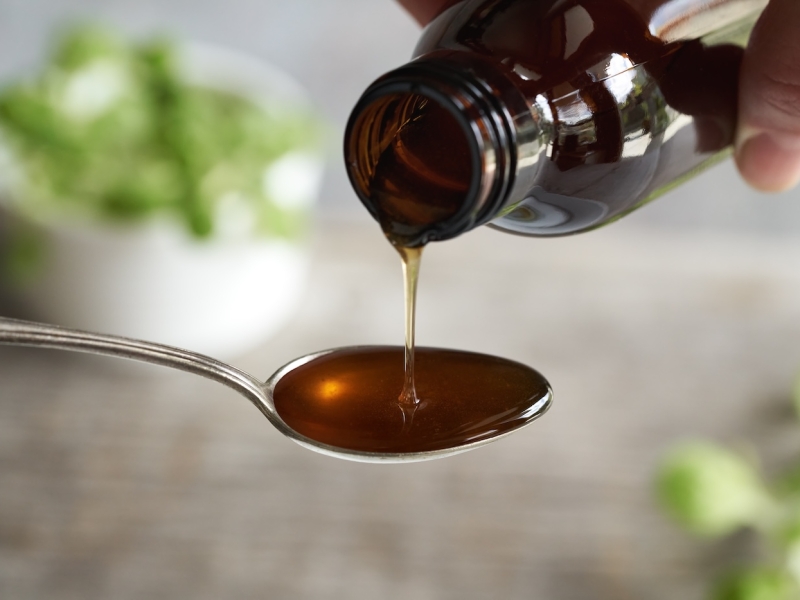How to make aromatic water (also known as a hydrosol)
If you’re looking to capture the essence of your garden’s blooming beauties, aromatic water is a fantastic way to do just that. This delicate, aromatic infusion can be used in a variety of ways – from skincare to cooking, or simply as a fragrant mist to freshen up your living space. Follow our step-by-step guide to create your own aromatic water, and bring the scent of herbs into your home all year round.
What is aromatic water?
Aromatic water, also known as hydrosol, is a fragrant liquid that results from the distillation of fresh flowers, leaves or roots. Unlike essential oils, which are highly concentrated, aromatic waters are gentle and versatile, capturing the essence and subtle scent of the herbs from which they are made. This aromatic water can be used in various applications, offering both the plants’ aromatic and therapeutic benefits.
What is aromatic water used for?
Aromatic water has many uses thanks to its mild nature and pleasing smell. Common applications include:
- Skincare: Aromatic waters are excellent for skincare routines. They can be used as facial toners, gentle cleansers, or as soothing mists to hydrate and refresh the skin.
- Cooking: Add a subtle floral note to your recipes by incorporating aromatic water into syrups, puddings, or drinks (botanical cocktails are a summer delight!).
- Aromatherapy: Aromatic waters are often used in aromatherapy to create a calming and relaxing atmosphere. They can be poured into spray bottles and misted around your home or used in diffusers.
Which herbs can I use to make aromatic water?
Below is a list of herbs on our website that can be made into aromatic water. There are of course many more plants that can be made into hydrosols, including the best known and most loved of all – rose water. These are our favourites:
-
Angelica
Price range: £2.75 through £6.00 Inc VAT -
Chamomile, Roman
£2.75 Inc VAT -
Clary Sage
£3.00 Inc VAT -
Fennel
£2.50 Inc VAT -
Lavender, English
Price range: £2.75 through £7.00 Inc VAT -
Valerian
Price range: £3.00 through £9.00 Inc VAT
Here are many more herbs you can make aromatic water with:
How do I make aromatic water?
Prep Time
10 mins
Cook Time
30 mins
Ingredients
- Fresh flowers, leaves or roots – refer to details in the ‘Harvesting and Preparation’ section of each herb on our website
- Clean water (if you can use spring water or distilled water, even better)
- Ice cubes
Equipment
- A large pot with a fitted lid
- A heatproof bowl that fits inside the pot
- A glass jar or bottle for storage
- A fine mesh strainer or cheesecloth
- Labels & pen
Method
- Pick some herb flowers and leaves from your garden. The best time to harvest is early in the morning, after the dew has evaporated but before the sun gets too hot. Gently wash the flowers to remove any dirt or insects.
- Place the heatproof bowl in the centre of the pot. Arrange the flower petals, leaves or roots around the outside of the bowl, making sure they don’t fall into it. Pour enough distilled water into the pot to cover the petals, but be careful not to overflow the bowl.
- Put the lid on the pot upside down, so the handle is pointing downwards. This will help the condensation to drip into the bowl. Turn the heat to medium-low and bring the water to a gentle simmer. Once the water is simmering, place ice cubes on top of the lid. The steam from the simmering water will rise, hit the cold lid, and condense into water droplets that will fall into the bowl.
- Simmer for about 30 minutes, or until you’ve collected a decent amount of aromatic water in the bowl. Carefully remove the bowl and let the flower water cool to room temperature.
- Using a fine mesh strainer or cheesecloth, strain the aromatic water into a clean glass jar or bottle to remove any petal fragments. Seal the container tightly, label and store it in the refrigerator. Your aromatic water should last for up to a month.
Making aromatic water is a simple yet enchanting way to savour the beauty and fragrance of your herb garden. With just a handful of blooms and a bit of time, you can create a delightful floral infusion that brings a touch of nature’s elegance into your daily routine. Happy distilling!










